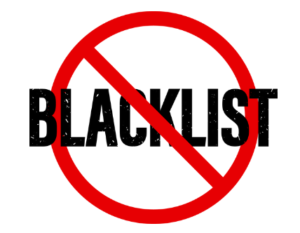What is a Blacklisted Phone?
The Impact of Phone Blacklisting
When a phone is blacklisted, it experiences several significant limitations:
– Network Restrictions: Cannot be activated on most carrier networks
– Service Limitations: May lose cellular service capabilities entirely
– Decreased Value: Its resale value significantly decreases
– Functionality Issues: Limited to Wi-Fi connectivity for basic features
How to Check if Your Phone is Blacklisted: Step-by-Step Guide
Find Your IMEI Number
Your IMEI is a unique 15-digit identifier assigned to your mobile device. You can locate it by:
- Dialing *#06# on your phone’s keypad
- Checking in your phone settings under “About Phone” or “Status”
- Looking on the original packaging, receipt, or SIM tray
- Checking the back of the phone or under the battery (for older models)
Use Online IMEI Checkers
Several reputable websites offer free IMEI checking services:
- IMEI.info: Provides detailed information about your device
- CheckMend: Offers comprehensive reports for a small fee
- SNDeepInfo: Verifies device status across multiple carriers
- IMEI24.com: Provides basic blacklist status information
Simply enter your IMEI number on these platforms and wait for the results.
Contact Your Carrier
Direct verification through your mobile service provider offers the most accurate information:
- Call your carrier’s customer service line
- Visit a local store with your device
- Log into your online account (some carriers offer IMEI checking tools)
- Provide your IMEI number and request information about the phone’s status
Check Government Databases
Some countries maintain official databases of blacklisted phones:
- United States: CTIA Stolen Phone Checker
- Canada: Device Check through the Canadian Wireless Telecommunications Association
- United Kingdom: CheckMEND service endorsed by British authorities
- Australia: AMTA’s Check Your Phone service
Search for your country’s official IMEI verification tool for the most reliable information.
What to Do if Your Phone is Blacklisted
Discovering that your phone is blacklisted can be frustrating, but there are potential solutions:
If You’re the Original Owner
- Contact your carrier immediately
- Provide proof of ownership (receipt, purchase contract)
- Explain the situation (false report, resolved payment issues)
- Request removal from the blacklist
If You Purchased Second-Hand
- Contact the seller with evidence of the blacklisted status
- Request a refund or replacement
- File a dispute through the payment platform used
- Report potential fraud to consumer protection agencies
Preventing Phone Blacklisting Issues
Take these preventative measures to avoid problems with blacklisted phones:
1. Purchase from reputable sources
– Authorized retailers
– Established online marketplaces with buyer protection
– Carriers and manufacturers directly
2. Document everything
– Keep receipts and proof of purchase
– Record the IMEI number when buying
– Save all communication with the seller
3. Verify before buying
– Check the IMEI status prior to purchase
– Test the phone with a SIM card before completing the transaction
– Meet in person for second-hand transactions when possible
4. Protect your own device
– Report lost or stolen phones immediately to your carrier
– Register your device with your carrier
– Use tracking and security features like Find My iPhone or Find My Device
Conclusion: Staying Informed About Your Device’s Status
Understanding whether your phone is blacklisted is essential in today’s mobile ecosystem. By following the steps outlined in this guide—finding your IMEI, using online checkers, contacting your carrier, and checking official databases—you can quickly determine your device’s status and take appropriate action if needed.
Remember that prevention is always better than dealing with a blacklisted phone. Purchase devices from trusted sources, keep detailed records, and verify status before completing any transaction. If you do encounter a blacklisted phone, act quickly by contacting the relevant parties to resolve the issue.
By staying informed and vigilant, you can protect yourself from the inconvenience and financial loss associated with blacklisted devices while ensuring your mobile experience remains smooth and uninterrupted. Check us out for more @ SoftwareStudyLab.com

